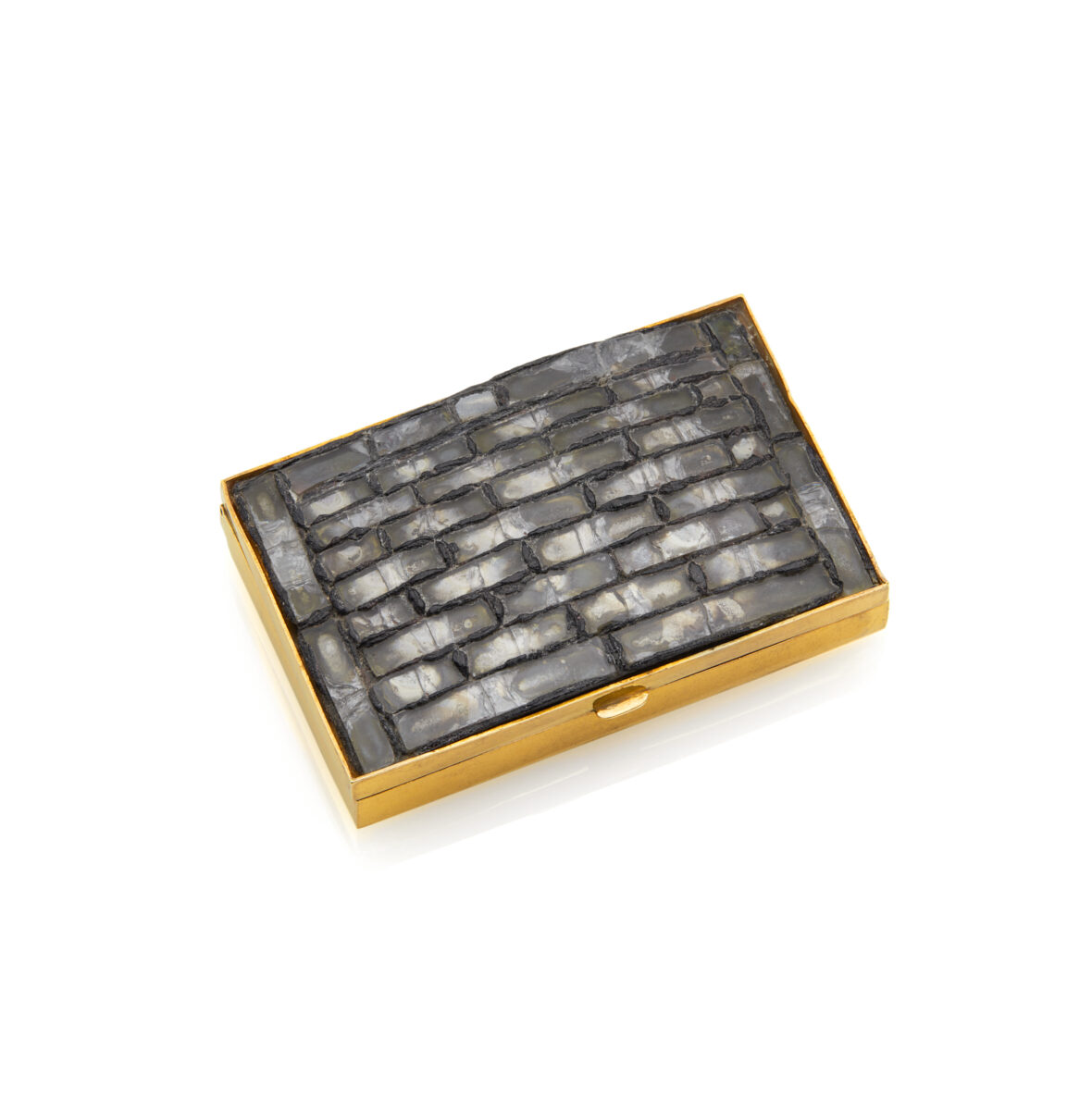Following a stint with the fashion designer Elsa Schiaparelli, Line Vautrin (1913-1997) began producing jewelry in her father’s metal foundry, which she sold herself. In 1937, she rented a stand at the Paris World Fair, which attracted enough customers to open a store in Rue de Berri, where she offered all kinds of accessories and jewellery, such as brooches, bracelets, earrings and buttons, but also bag clasps and belt buckles. In 1946, she moved to a better address in the Rue du Faubourg Saint-Honoré.
From the mid-1950s onwards, she embarked on a new creative path when she discovered cellulose acetate as a material. Mirror glass was inserted into fine resin sheets, layered, scraped, scored, and worked with fire, in a mosaic-like technique. In this manner, she created lamp stands, tables and above all mirrors, with which her name is now irrevocably linked. She had her material protected under the name “Talosel”.
Vautrin attributed the rediscovery of her designs to the London art dealer David Gill, who found them at an auction of her property in Paris in 1986. Through him, and later the auction market, her mirrors found their way into numerous private collections. The Victoria and Albert Museum in London also houses jewelry by her.
In 1992, she received the Prix national des Métiers d’Art for her research on decoration techniques. She died suddenly on April 12, 1997, two years before her retrospective at the Musée des Arts Décoratifs in Paris.


